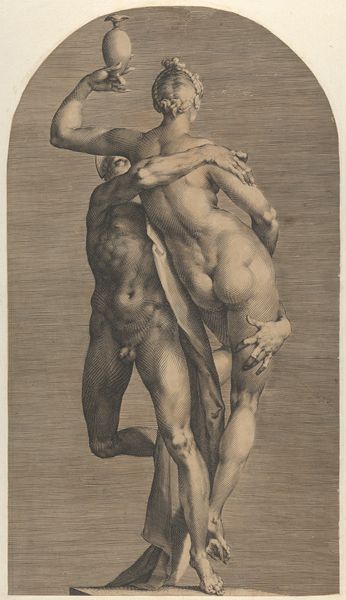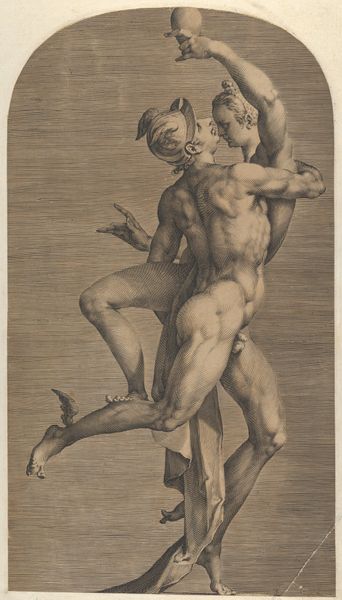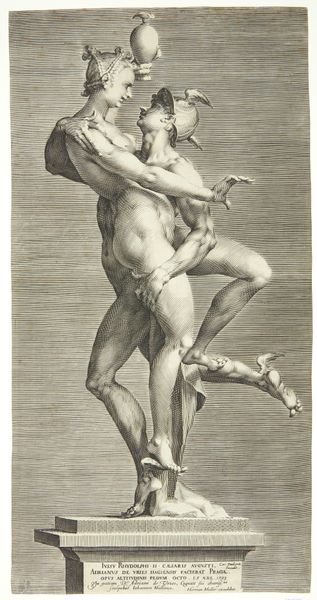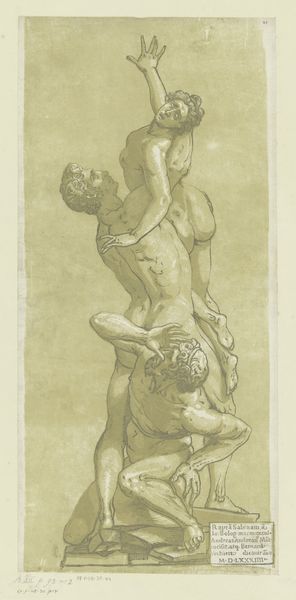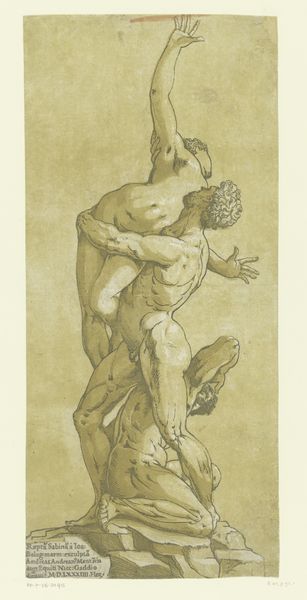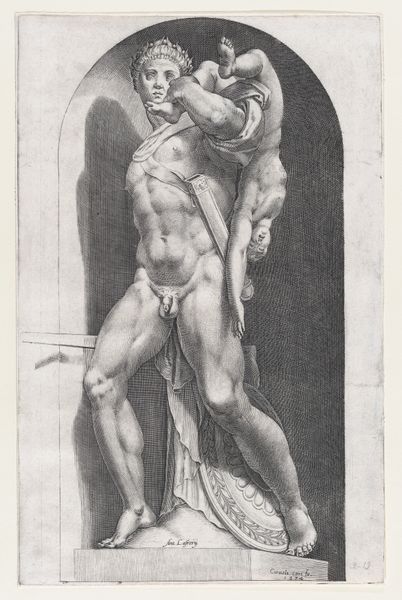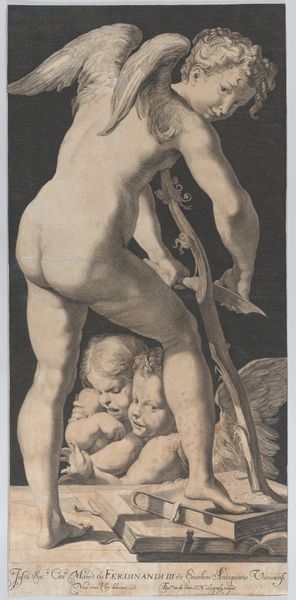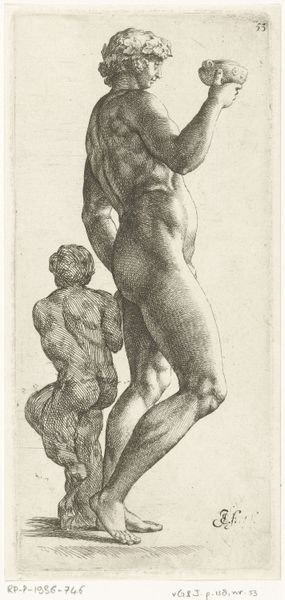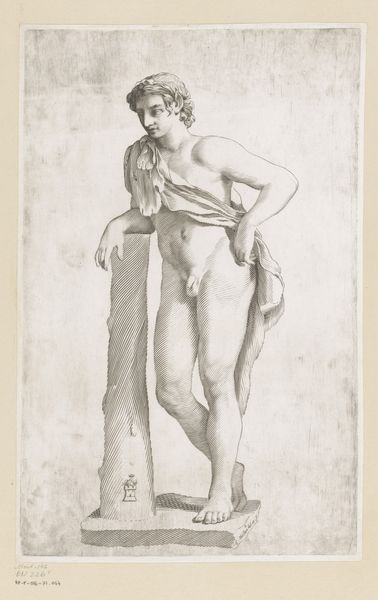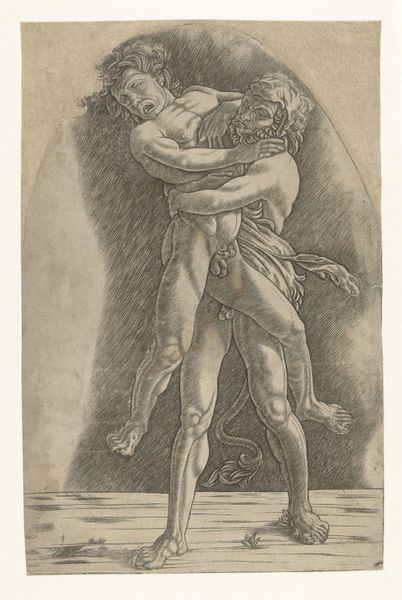
Merkur bortfører Psyche. Psyche set bagfra 1595 - 1598
0:00
0:00
print, engraving
#
baroque
# print
#
mannerism
#
figuration
#
mythology
#
history-painting
#
nude
#
engraving
Dimensions: 501 mm (height) x 257 mm (width) (bladmaal)
Curator: Immediately striking. The dynamism is palpable, an upwards thrust rendered with precision, yet the image as a whole appears surprisingly static despite the implied movement. Editor: What captures my attention is the fraught historical baggage of idealized bodies – how such depictions reinforce narrow beauty standards, especially when divorced from lived experience. This engraving, created by Jan Harmensz. Muller between 1595 and 1598, titled "Merkur bortfører Psyche. Psyche set bagfra", draws on classical mythology. Curator: Exactly, and look at how the lines define form. Muller uses hatching and cross-hatching with extraordinary skill to create tonal variations that model the figures. Consider the muscularity of Mercury, the delicacy of Psyche's form. It's all about surface and texture. Editor: But who has access to these ideals? And at what cost? Mercury, representing masculine power, carries Psyche, her back turned. What does it mean to have her identity obscured? Her vulnerability becomes the focal point, perpetuating a power imbalance that continues to echo in our social structures. Her representation from the back reduces her personhood. Curator: While I acknowledge the social dimension, I'd argue the visual rhetoric isn't solely about power but also about drama. Her averted face pulls the viewer in, demanding closer inspection. Look how Muller created such depth with linear methods, how the draped cloth directs our gaze, not unlike stagecraft. Editor: However, the choice to depict abduction raises serious questions about consent and agency. The artistic style and beauty of the art do not invalidate our ability to reflect on this visual representation critically. Muller reflects the values of his time; nevertheless, how do these choices normalize harmful views of subjugated people through narrative and myth? Curator: Perhaps. Ultimately, analyzing the formal construction offers one interpretive avenue while considering its cultural implications adds richness. Both enhance our viewing experience. Editor: Precisely. By juxtaposing the artistry of form with crucial contextual layers such as gender, race, and politics, we not only enrich our historical engagement but equip ourselves to better understand our place within its ever-unfolding trajectory.
Comments
No comments
Be the first to comment and join the conversation on the ultimate creative platform.
